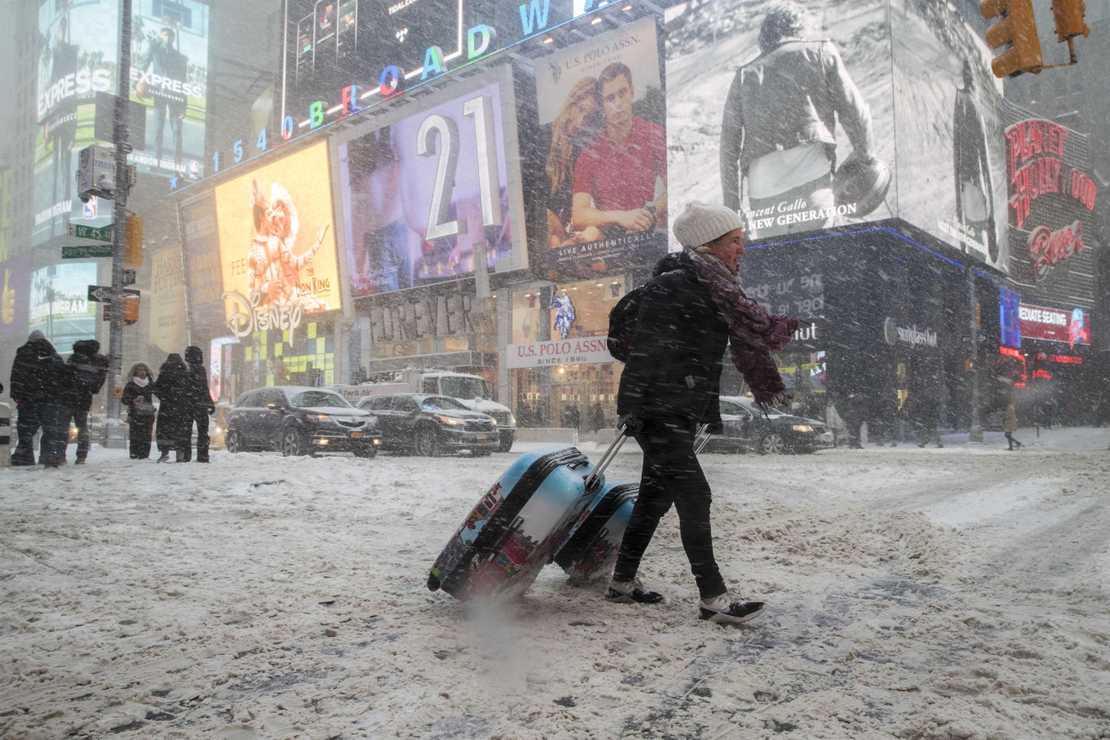
Earlier this week, when I wrote about the protests following the leak of a draft Supreme Court decision that could potentially overturn Roe v Wade, I speculated on how such a change might impact migration inside the United States. Would pro-abortion people begin migrating to blue states where abortion remains legal while pro-life people might pack up and move to red states? Apparently, I wasn’t the only one wondering about that. Activists on the left quickly began announcing their threats to relocate away from states that choose to outlaw or severely restrict abortions. But that won’t be possible for everyone, however. At the Atlantic, Jerusalem Demsas writes about “the right to pick up and leave” and how that “right” might be in danger today.
The ability to move is especially important at this moment, as the Supreme Court seems poised to overturn Roe v. Wade, empowering state governments to determine the abortion rights of millions. If abortion does indeed become a state-level issue, it will join a host of other civil rights and benefits that depend on location, including the ability to transition, protection from LGBTQ workplace discrimination, and whether teachers can discuss racism in the classroom or even reveal that they aren’t straight. Major differences also exist in social-insurance programs: Twelve states still refuse to expand Medicaid, and the coronavirus pandemic has showcased just how much public health and safety nets depend on one’s zip code…
What blue-state politicians are not doing is ensuring that people in other states can find refuge in Democratic states. For decades now, what was once commonplace—Americans moving from state to state—has been made exceedingly difficult, largely because of cost-of-living concerns. Declining rates of interstate mobility show that many Americans are stuck where they are, consigned to the political decisions of governments they may profoundly oppose, without an escape valve. Low-income Americans have also been forced out of expensive, typically blue states to less expensive, typically red ones, where their access to basic government protections may be nonexistent, but at least the average home price doesn’t exceed $600,000.
What Demsas is actually talking about here has nothing to do with what is normally understood as the fundament rights of Americans. She’s discussing the failure of many states with high costs of living (typically the coastal blue states) to ensure that affordable housing options are available for those with modest incomes.
READ RELATED: Medical Student Stabs a Patient Because He Made Fun of Her 'She/Her' Nameplate
Just to clarify the terms being used here, there is no constitutional “right to move” from state to state. The Founders apparently didn’t see a need for such an enshrined right because it was probably just assumed that free people could live where they choose. And to this day, there is no law barring anyone from “picking up and moving” unless they are in prison or on probation or the subject of a restraining order or similar penalties imposed by the courts. So in effect, you do have a “right to move” in the sense that the government generally will not make any effort to stop you.
However, having a “right” to move doesn’t mean you will automatically be “able” to move. Moving is expensive and those costs are driven up dramatically if you’re moving from a rural area with a low cost of living to a city where many people won’t be able to afford the rent on an apartment. (See New York City for only one of many examples.) Other factors come into play also. Many people will feel constrained by the need to stay close to the rest of their families. Some may work in fields where there are no good job opportunities waiting at their desired location. There are plenty of factors that might hinder or completely prevent people from relocating.
Of course, the author’s primary focus this week is on the abortion issue. Her premise is that pro-abortion people who are “oppressed” in red states may be “stuck” there. But that has nothing to do with a lack of rights. It is, as Demsas herself admits, the failure of state and municipal governments in high cost of living areas to provide any sort of affordable housing options. The fact that providing such options and ensuring they are made available in a fair way has proven to be nearly impossible doesn’t change the reality of the situation. Not everyone can afford to live in Manhattan or Hollywood or downtown San Francisco. And to be honest, there are plenty of us who would never make that choice even if we could afford it. But rather than focusing on the “oppressive” nature of states where legislators choose to ban or restrict abortions, perhaps she could focus on the failings of those blue state governments that are responsible for making such migration impossible for all but the wealthy.
Source:





